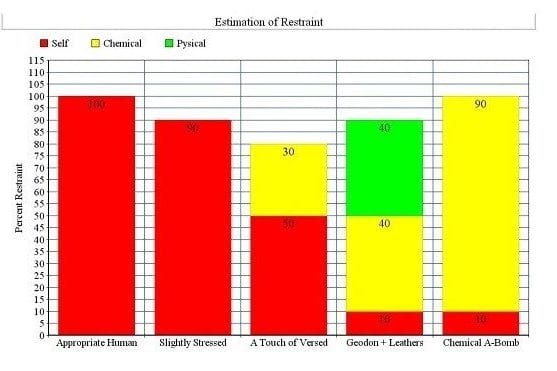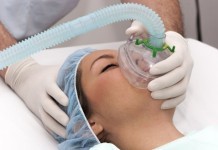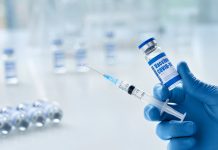CHICAGO, IL – A five patient case series out of Northwestern University recently evaluated the utility of using physical and/or chemical restraints to supplement patients that have self-restraint deficits. Utilizing the Saratoga Self-Restraint Scale, five unique patients were evaluated and reevaluated post-intervention. The study concluded that both physical and chemical restraints are adequate in patients lacking self restraint with several small caveats.
Based on the patient experiences pictured in Table 1, the authors of the study estimate that the optimal amount of restraint is anywhere above 75%. They attempted to demonstrate that any combination of physical and chemical restraint would suffice, but based on their experience with the patient labeled “Geodon + Leathers,” physical restraints add, at a maximum, 40% restraint.
Thus, for example, if a patient were to start with less than 35% self restraint, physical restraints alone will not suffice and the patient may continue to piss on your floor, obstruct their own care, and scream profanities at anyone with funny hair.
Discussing the individual patient experiences, neither an appropriate human nor a slightly stressed human need any form of intervention. The patient labeled “A Touch of Versed” was described as squirrelly and inappropriate but responded beautifully to a small amount of anxiolysis.
The last 2 patients in the case series exhibited very little self restraint. The authors report that “Geodon + Leathers” almost scored a 0 on self restraint but apparently thought better about scooping out his own eyeball prior to presenting to the emergency department. Both of these patients ultimately achieved adequate restraint, although “Geodon + Leathers” did demonstrate the limitations of physical restraint and “Chemical A-Bomb” briefly required a nasal trumpet with supplemental oxygen.








